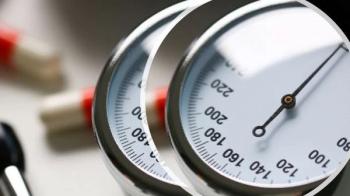
Living Lung Transplants Found Life-Saving Option in PAH
OKAYAMA, Japan -- When medical therapy flags for pulmonary artery hypertension (PAH), lung transplants from related living donors can be life-saving, researchers here said.
OKAYAMA, Japan, July 30 -- When medical therapy flags for pulmonary artery hypertension (PAH), lung transplants from related living donors can be life-saving, researchers here said.
In a prospective but non-randomized study, five-year survival was 100% for patients getting a living-donor lobar lung transplant, according to Hiroshi Date, M.D., of the Okayama University Graduate School of Medicine.
In contrast, five-year survival was 53% among patients who remained on treatment with epoprostenol (Flolan) and in some cases bosentan (Tracleer), Dr. Date and colleagues reported online in the Journal of the American College of Cardiology.
The data support the option of doing living-donor lobar lung transplant in PAH patients who would die soon otherwise, the researchers concluded.
The living-donor method was devised as a way around the shortage of lungs from cadavers, the researchers noted. Right and left lower lobes from two healthy donors -- spouses and second-degree or closer relatives in this study -- are implanted under cardiopulmonary bypass.
For this study, patients with World Health Organization functional class III or IV PAH and mean pulmonary artery pressure of greater than 50 mm Hg were prospectively followed as they waited on a transplant list, Dr. Date and colleagues said.
Of the 28 patients, two had a cadaveric transplant, 11 had a living donor transplant, and the remainder stayed on medical management until they died or their health status improved.
Because there were only two cadaveric transplants, the researchers reported only comparisons between the medical management group and those who got living-donor transplants.
Of the 15 medical patients, six died of disease progression and eight improved their functional status to Class II and were removed from the transplant list, Dr. Date and colleagues reported. Six of the nine survivors are currently treated with oral bosentan and intravenous epoprostenol.
Analysis revealed that one-year-survival was 80%, three-year survival was 67%, and five-year survival was 53% for the medically treated patients.
Among the living-donor transplant patients, all but one had bilateral lobe transplantation. Operative morbidity included lung edema requiring reintubation in three cases, bleeding from the chest wall requiring re-thoracotomy in two cases, massive hemoptysis in one case, and one case of kinking of the left pulmonary artery.
Two patients developed unilateral bronchiolitis obliterans syndrome, but the other graft was not affected, the investigators reported.
On average, patients were mechanically ventilated for 13.4 days and stayed in the hospital for 75.8 days. All were discharged without oxygen inhalation therapy. Among the donors, there were no postoperative complications.
After a median 48 weeks of follow-up, there were no PAH-patient deaths, which was significantly different from the medical management group at P=0.028.
All 11 transplant patients are in functional class I, which is significantly better (P<0.001) than the medical management group, whose functional class is II or III, Dr. Date and colleagues said.
The mean pulmonary artery pressure of the transplant patients decreased from 62 mm Hg before transplant to 15 at discharge, the study found.
Although the findings supported the notion of a living-donor transplant as an option for people doing poorly in medical therapy for PAH, Dr. Dates and colleagues also noted that eight of the 15 medical patients did well on long-term epoprostenol.
"Ultimately the timetable must be set by the unique situation of each patient," they concluded.
Newsletter
Enhance your clinical practice with the Patient Care newsletter, offering the latest evidence-based guidelines, diagnostic insights, and treatment strategies for primary care physicians.


















































































































































































































































































